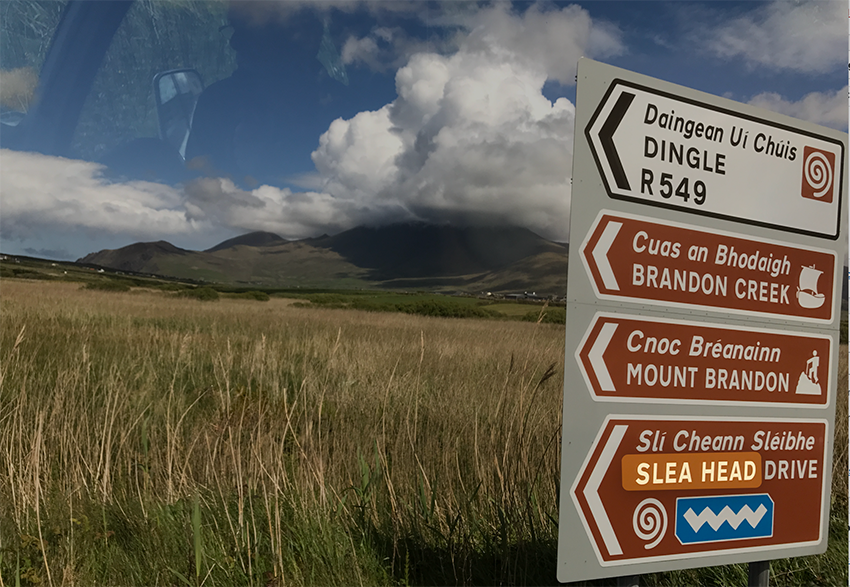
Treat Yourself to One of the Most Scenic Drives in Ireland – Slea Head
One of the most scenic drives in Europe is the Dingle drive around Slea Head – the western tip of the Dingle Peninsula where glimpses of Slea Head and the Blasket Islands provide stunning sea views.
The Dingle Peninsula was once referred to by National Geographic as “the most beautiful place on earth.” Dingle never disappoints – and Slea Head is stunning.
Slea Head is a stunning coastal drive located on the Dingle Peninsula in County Kerry, Ireland. This scenic route offers breathtaking views of the Atlantic Ocean, dramatic cliffs, and picturesque landscapes. There are many stopping places to get out and absorb the magical landscape where you’ll find azure seas, wild tides, expansive sky (or foggy mist), cliff faces, famine hut ruins, Mount Brandon, hills that are your “40 shades of green,” megalithic ruins, mystical off-shore islands, and SHEEP.
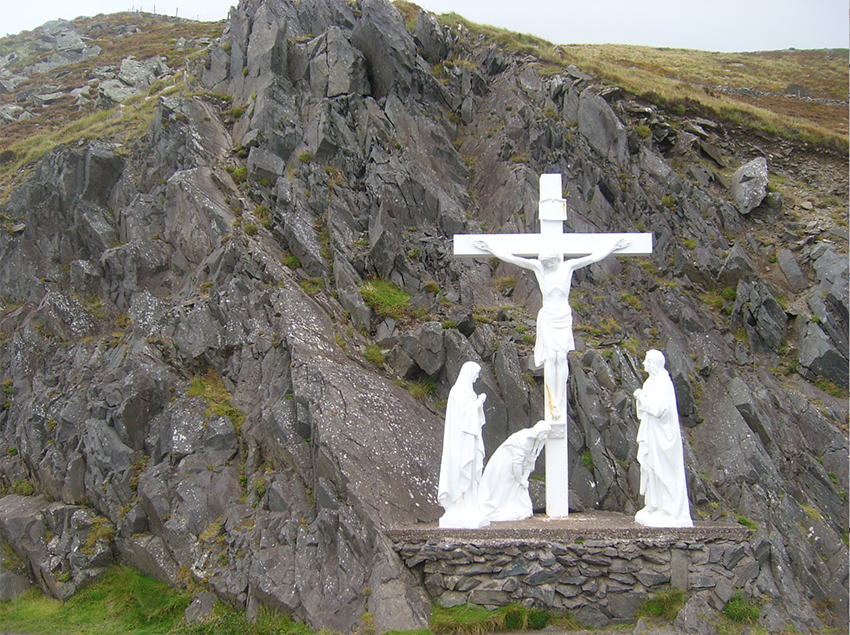
Along Slea Head, you’ll find several notable sights and points of interest. One of the most iconic stopping places is the larger-than-life-size crucifixion sculpture inserted a the cliff face. It is bright white and was erected as a landmark for fishermen to see through the fog and mist when returning home from the sea.
Some of the other interesting places along the Slea Head Drive are:
Gallarus Oratory: A well-preserved early Christian church, Gallarus Oratory is a stone structure dating back to the 6th to 9th centuries. It is an iconic example of dry-stone corbelling and is located near Slea Head. The parking lot requires a paid entry – but it’s worth it to go into the center and watch the film before venturing out to this 7th-century prayer cell.
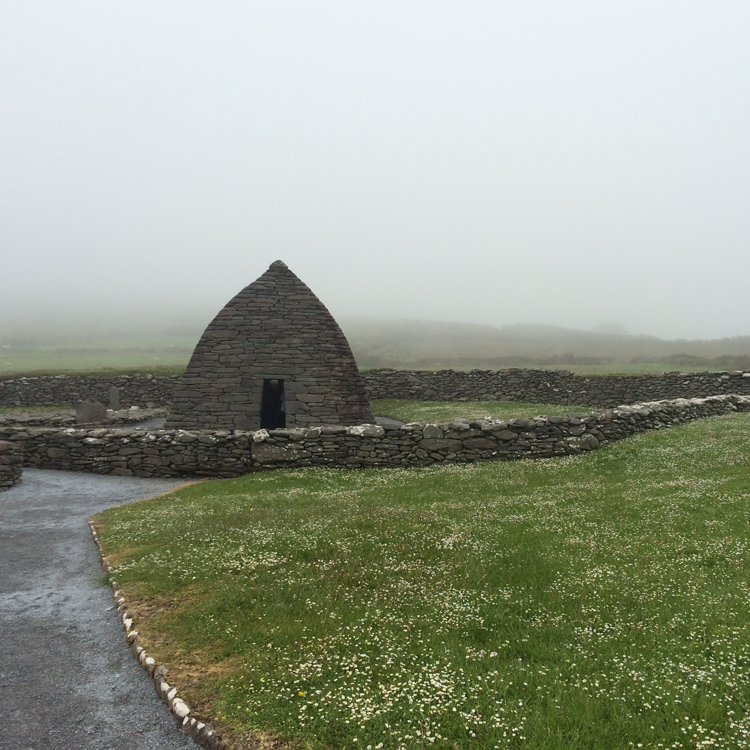
Dunquin Harbor: This picturesque harbor offers stunning views of the Blasket Islands. The area around Dunquin is known for its rugged beauty and is a great spot for photography.
Blasket Islands: While not directly visible from Slea Head, the Blasket Islands are located just off the coast. They were inhabited until the mid-20th century and are known for their literary and cultural significance. Learn more about this at the Great Blasket Center. The most often photographed Blasket Island is The Sleeping Giant – an island that resembles a giant taking a nap on the Atlantic tide.
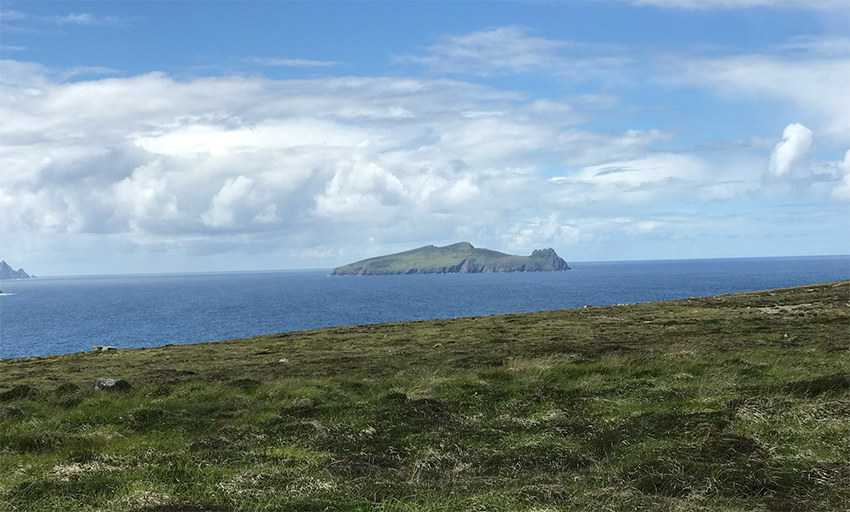
Ceann Sibeal (Sybil Head): This headland offers panoramic views of the Atlantic coastline and is known for its distinctive jagged cliffs. This is also where several scenes from Star Wars: The Last Jedi were filmed in 2016.
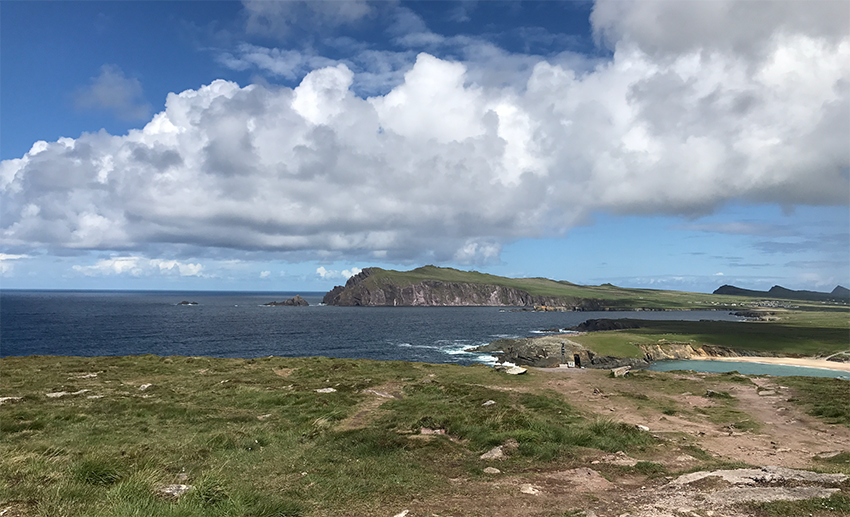
Dunmore Head: The westernmost point of the Dingle Peninsula, Dunmore Head provides stunning views of the Atlantic and the nearby Blasket Islands.
Fahan Beehive Huts: Ancient stone huts, known as beehive huts, are located near Slea Head and offer a glimpse into early Christian or prehistoric habitation.
Coumeenoole Beach: A beautiful, secluded beach with golden sands and breathtaking views of the rugged coastline.
Ballyferriter Village: A charming village with traditional Irish architecture, pubs, and shops. It provides a glimpse into local life on the Dingle Peninsula.
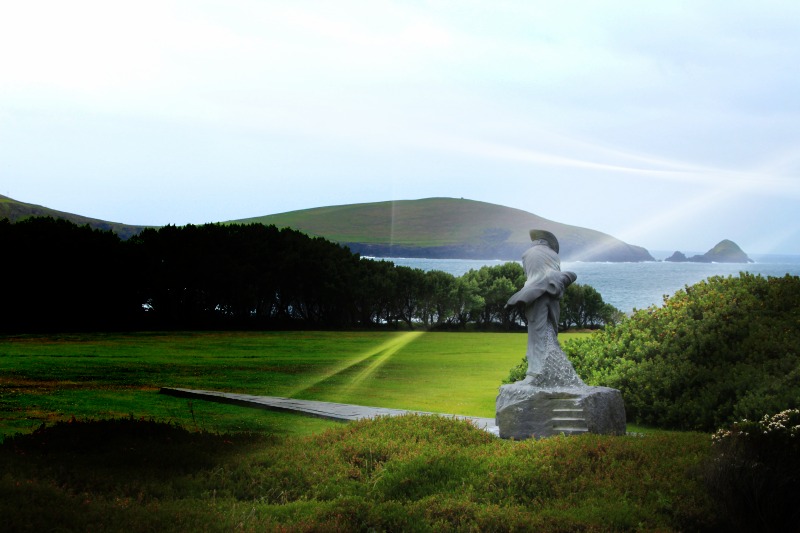
Nearby on the hilly ground on the land-side of the road are abandoned potato farms, left when the blight hit, never to be reclaimed. One can still see the potato ridges in the ground. Whether sunny, cloudy, or pouring rain, the Slea Head drive offers the traveler or pilgrim a peaceful, scenic look that has been relatively unchanged for centuries.

Our drive around the Dingle Peninsula was quite memorable. What a lovely country!
Love your blog, Dona. Great format and a good model for travels to follow. thanks for checking out this post. Why don’t you come to Ireland with us this trip?
Oh I wish! Daughter in expensive small liberal arts college, son soon to follow. Maybe when the tuitions are all paid off. (I need to go though because I broke, then lost, my Claddagh ring my husband bought me on our honeymoon while visiting the shop where they originated).
Great photos! Check out our set of Dingle on flickr – one of my favorite thin places is the Kilmalkadar ruins – an old Norman church with one of the old Ogham Accord stones in the front of the yard, and a truly ancient sundial (sans gnomon).
http://www.flickr.com/photos/hey4ndr3w/sets/72157621782183708/
Great photos, Andy. Sorry I didn’t get to see that church. I’m going to make it a priority on this trip.
We missed that church too, although we’d planned on visiting it.